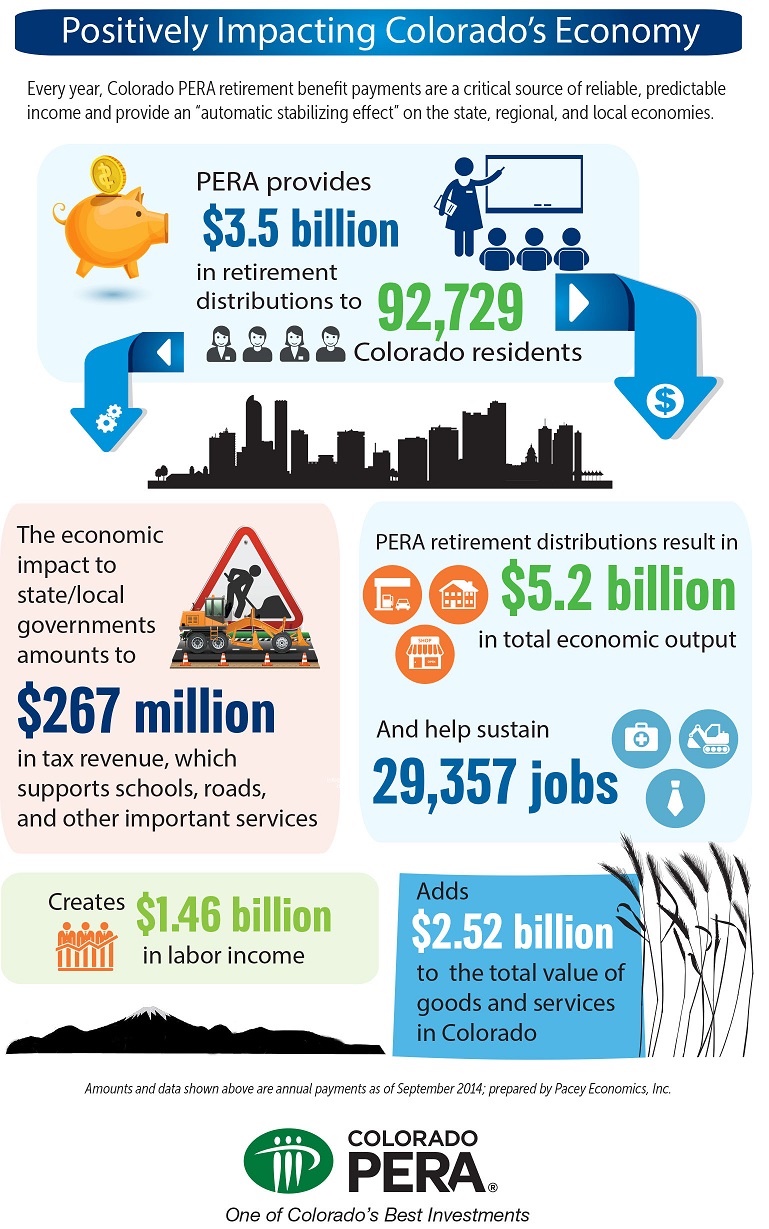The Legislative Audit Committee received an update from Cavanaugh Macdonald on the funded status of PERA and an update to the Signal Light Study originally authorized under Senate Bill 14-214. We at Secure PERA wanted to take some time to look back at where we were and where we have come using the Signal Light Study. We created a one pager for the Audit committee members to demonstrate how pre-SB1 PERA was in the red and SB1 was able to bring us back to the green levels. After last year’s disappointing 1.5% rate of return the State & School divisions have slipped back to yellow. But, it is important to look at the second part of what the study showed us – what probability PERA had of improving. You can see the entire updated results from CavMac by clicking here. Or review our Signal Light Study Summary below (you can click here for the one pager version to print)
The History
A sensitivity study of PERA was commissioned by the State Legislature in Senate Bill 14-214 and completed by Pension Trustee Advisors (PTA), an independent actuarial firm. The study recommended the signal light status be updated each year during the annual valuation process. The update was done this summer by Cavanaugh Macdonald (CavMac) based on the 2015 year-end valuations and using the framework and signal position definitions developed by PTA.
The study looks at how investment returns, PERA population growth, mortality and other actuarial assumptions impact the time line for full funding of PERA’s divisions.
The Summary
All of PERA’s Divisions are solvent and on a path to full funding. PTA stated in their original Sensitivity Study that, “Investment return has the widest range of variability and has the biggest impact on the full funding date.” In the summary chart, we summarize the findings of both the PTA study and the CavMac update.
We use the investment return assumption data they provided as we agree that investment returns will have the greatest impact on PERA’s stability.
Secure PERA’s Position
As demonstrated by the PTA study and CavMac update, the sacrifices made in Senate Bill 1 are working and we have to continue to let them work, the SB1 mandated employee and employer contribution increases aren’t scheduled to be fully implemented until 2017 & 2018. Senate Bill 1 was designed as a long-term fix and it needs time to truly be effective.
A defined benefit plan is the most cost-effective for Colorado taxpayers and provides the best retirement security for current and future PERA members. The Legislature’s study authorized in SB 12-214 and conducted by Gabriel, Roeder, Smith & Company (GRS) compared different retirement plan designs and found that the cost to fund PERA benefits is lower than the cost of other plans in the public and private sector – meaning more money stays in our member’s pockets instead of Wall Street’s. They also stated that when costs are held constant, PERA’s plan delivers the highest percentage of salary replacement income in retirement for both short-term and career public employees.
PREVIOUS SIGNAL LIGHT STUDY POST
This week, the Colorado Office of the State Auditor and the Legislative Audit Committee released a report written by Pension Trustee Advisors (PTA). The study explored the role and variability of actuarial assumptions in projecting the most likely future funded status of the PERA Hybrid Defined Benefit Plans. The goal of any retirement system is to accumulate sufficient assets to fully fund all of its current obligations. The report concluded that the Defined Benefit Plan is currently on track to be fully funded.
Additionally, PTA developed a simplified signal light reporting system that will help policymakers assess the current full funding date of each Division and the likelihood of future changes due to investment returns and other metrics. PERA was awarded “green lights” to four of PERA”s five division trust funds: state, school, local government, and Denver Public Schools, and a “yellow light” to the Judicial Division.
“PTA’s independent analysis of the Colorado PERA retirement plan, conducted with oversight of the Office of the State Auditor, provides policymakers with a new framework for assessing future predictions and assumptions used to determine PERA’s financial health,” said PERA Executive Director Gregory W. Smith. “We are receptive to having another tool to provide information about the sustainability of PERA. It provides more transparency to a complicated topic,” he continued.
The PTA report included three recommendations related to the use of the signal-light methodology. They are:
- PERA should utilize the proposed signal light reporting annually to give policymakers an assessment of the current projected full funding dates compared to the objective. The investment return required (and the likelihood) of maintaining, improving, or declining from the current signal should also be determined periodically and whenever significant changes have occurred. Other metrics should also be considered.
- PERA should expand its annual reporting to include the causes for any changes in the expected full funding dates.
- PERA should ensure that future actuarial audits include a confirmation of the multi-year actuarial projections currently used to determine the full funding date.
PERA has agreed to introduce all three recommendations.
You can read the entire report by clicking here.



